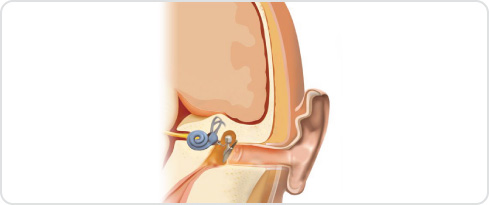Your views

Your feedback is vital to us as we continue to increase the quality of our services.
You are here:
Date: 22 February 2025
Time: 19:45

Surgical solutions to hearing loss
The normal hearing pathway
Sound waves in the air reach the outer ear or pinna. They pass down the outer ear canal where they reach the ear drum (tympanic membrane). The sound vibrations are amplified by the ear drum and they pass through into the middle ear.
The middle ear is an air filled cavity and contains the middle ear bones or ossicles. These are the smallest bones in the body and their role is to transmit sound waves to the organ of hearing or cochlea. Specialist hair cells in the cochlea are stimulated by the sound wave and this in turn stimulates the hearing nerve and transmits the perception of hearing up a complex pathway to the hearing centre in the brain.

Types of hearing problems and potential solutions
In some types of hearing loss the mechanism in the middle ear that transmits sounds to the inner ear does not work properly and sounds do not reach the cochlea effectively. This type of hearing problem is called a conductive hearing loss. It may be associated with some permanent degree of hearing loss as well and this is referred to as a mixed loss. In some cases of significant conductive or mixed hearing loss, when a conventional hearing aid or bone-anchored hearing aid (Baha) cannot be used, a middle ear implant (MEI) can be surgically inserted into the middle ear to assist with sound transmission to the cochlea.
The organ of hearing (cochlea) is located inside the skull and is a spiral shaped cavity filled with fluid. This cavity is pided into three parts and contains specialised hair cells that respond to sound. Some types of permanent hearing loss are caused by damage to these hair cells. The purpose of a cochlear implant (CI) is to take over the role of the damaged hair cells and stimulate the hearing nerve directly.
Related pages

Getting here
Information about travelling to, staying at and getting around the hospital.

Jobs at UHB
A great place to work. Learn why.


